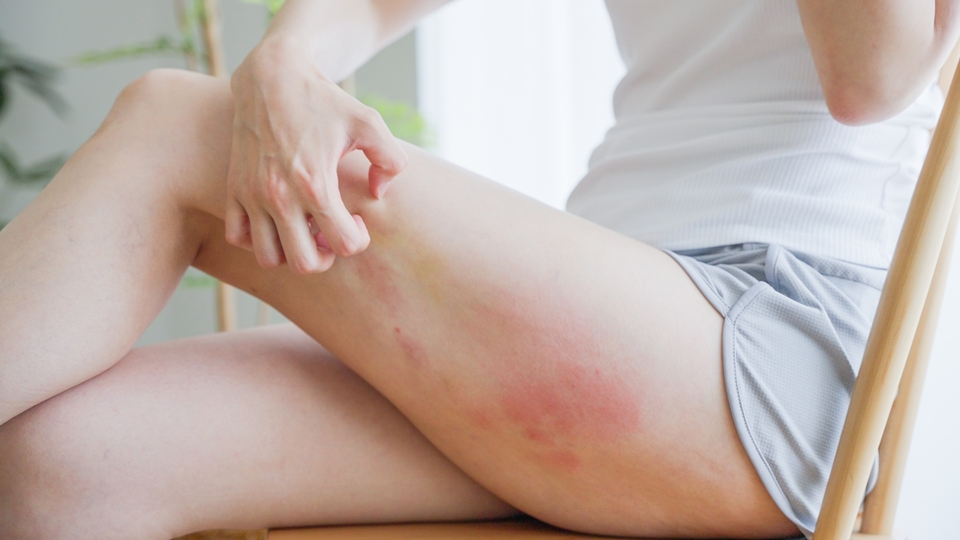Approximately 70 million people are estimated to have vitiligo. Vitiligo is a chronic skin condition that causes patches of skin to lose their pigment, resulting in white or light-colored areas. Vitiligo typically starts on your hands, forearms, feet, and face. The good news is that treatment options are available.
What Causes Vitiligo
The exact cause of Vitiligo is unknown, but it is thought to be an autoimmune condition. Family history and genetic factors may play a crucial role as well. Here is a more detailed look at the factors that contribute to Vitiligo:
Autoimmune Attack
The body's immune system normally protects against infection. But sometimes the immune system can mistakenly target and destroy melanocytes, leading to a loss of pigment, causing white patches on the skin.
Genetic and family history
Vitiligo can run in families, suggesting that there is a genetic component involved in getting vitiligo. Some genes suspected to be involved in the development of vitiligo are HLA genes, PTPN22, and NLRP1.
Environmental triggers
Exposure to certain chemicals or severe burns can trigger or worsen vitiligo. Stressful life events have also been linked to the onset or worsening of vitiligo.
Other factors
Other autoimmune diseases, such as thyroid disease, diabetes, or alopecia, increase the risk of developing vitiligo. Additionally, some studies suggest that damage to the skin, such as a cut or burn, can trigger vitiligo.
Is Vitiligo Hereditary?
Yes, vitiligo has a hereditary component, but it is not directly hereditary. A family history of vitiligo is common, with 30-35% of individuals with the condition having first or second-degree relatives also affected. However, vitiligo is a complex genetic trait, meaning multiple genes are involved and are not simply passed down through one dominant or recessive gene.
Why Using Sunscreen is Important for Vitiligo Patients
Sunscreen is essential for people living with vitiligo. Vitiligo is characterized by the loss of melanin-producing cells, which are responsible for producing the pigment that protects the skin from the sun.
The depigmented skin patches are more susceptible to sun damage, including sunburn and skin cancer. Sunscreen helps protect these areas from UV radiation, which can cause damage and potentially worsen vitiligo.
How Common is Vitiligo?
Vitiligo affects approximately 0.5-1% of the global population, meaning it occurs in about 1 in 100 to 1 in 200 people worldwide. Vitiligo is more common in younger people, with symptoms typically appearing before the age of 30.
It's also more common in individuals with darker skin tones, and some studies have reported that vitiligo is more prevalent in certain regions, such as Asia and Africa.
Symptoms of Vitiligo
The main symptom of vitiligo is the loss of skin color, appearing as white patches on the body. But other symptoms that may indicate vitiligo as well. Here is an overview of symptoms:
- Skin: The skin may lose pigment, resulting in white or pale patches. The patches can appear on various parts of the body, including the face, arms, hands, legs, and feet.
- Hair: An individual may lose pigment in hair in affected areas, resulting in hair turning white or prematurely gray. Vitiligo can affect hair on the scalp, eyebrows, eyelashes, and beard.
- Mucous membranes: Vitiligo can also affect the mucous membranes (the moist lining of the body). As a result, this can lead to a loss of pigment in areas like the inside of the mouth and nose.
Book an Appointment Today
At Radiant Dermatology & Aesthetics, we provide various treatment options for vitiligo based on your preferences and the type of vitiligo. While there are no permanent treatments for vitiligo, our specialists can recommend the best ways to manage your condition. If you're ready to find the best treatment option for your vitiligo, book an appointment with us today.
Photo Credit: SeventyFour




.svg)



.svg)







.png)


